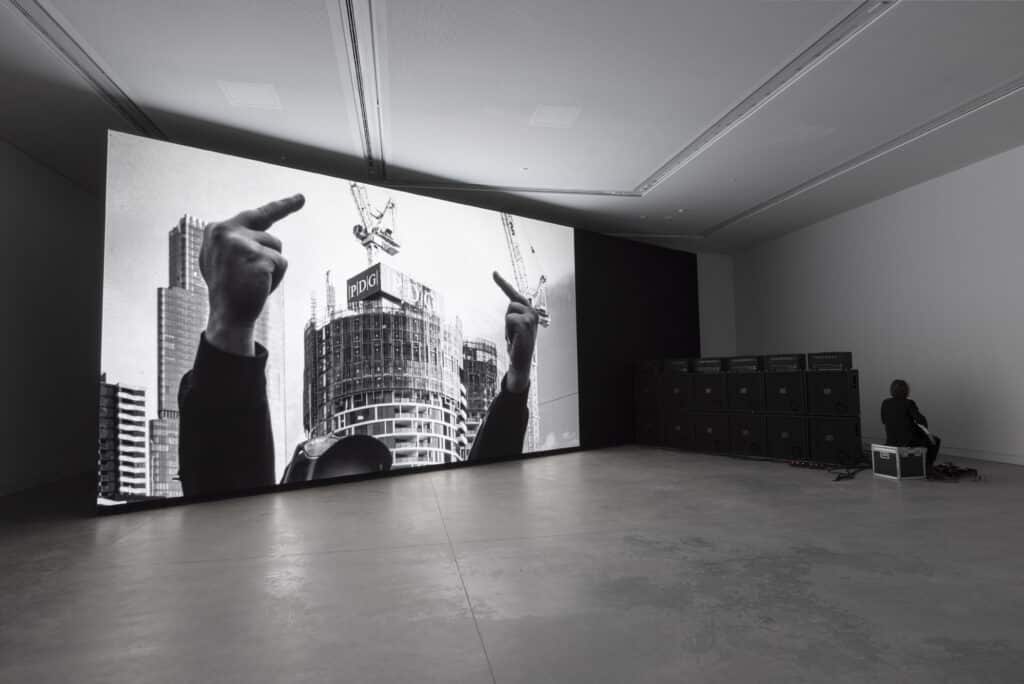The 59th International Art Exhibition of La Biennale di Venezia is open to the public this weekend, until late November. In the Australian Pavilion contemporary artist and noise-musician Marco Fusinato’s ‘DESASTRES’ curated by Alexie Glass-Kantor is on view.
DESASTRES is an experimental work that synchronises sound with image in the form of a durational solo performance as installation staged every day of the biennale, for a total of 200 days, a first for the Australian pavilion.
What will this look like? In a large room the artist will perform on an electric guitar, sitting with his back to the viewer beside a stack of amps and a towering screen which is illuminated and obscured by flickering strobe-effect lights. Fusinato will improvise slabs of noise, saturated feedback and discordant intensities that trigger a deluge of images.

The feeling of lockdown in Melbourne lead the artist to ponder Francisco Goya’s ‘The Disasters of War’, an early 19th century series of etchings he produced while living alone and going deaf in a time of unrest. His gallery, Anna Schwartz Gallery adds, that Fusinato’s ‘work embraces all the associated frustrations, pessimism and turmoil’ of life in pandemic times.

The images have been sourced by a series of words put into an open search, starting with ‘desastres’, the artist says he’s drawn to difficult images which create tension and spotlight how each viewer has a different ‘read’ or perception of an image. The improvised music and score of changing images mean that the piece is not static, it will evolve over time and be different for every person on each visit.

In conversation with Daniel Browning on ABC radio Fusinato mentioned that his choice of the electric guitar was complex, associating it with capitalism, but primarily he sees it as a tool to defy expectations, a conceptual axe in the sensory experience. The decision to present a durational performance in lieu of a ‘traditional’ exhibition was to avoid leaving artworks in the Giardini della Biennale ‘like a mausoleum’. Fusinato and Glass-Kantor wanted to create something in real time that they believe in, ‘we wanted a work that was a monster, because these are monstrous times’ Glass-Kantor said.